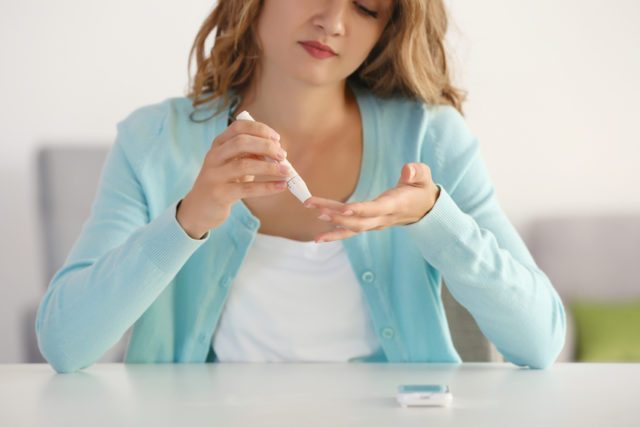According to Dr. Ileana Chiari-Shan: Novo Nordisk drives innovations in health
First-care doctors -generals and internists-, diabetologists, and endocrinologists in the country analyzed the new strategies that will improve the quality of life of those who will live with diabetes during the next decade. These specialists were present at “DREAM”, an innovative scientific event of Novo Nordisk that took place last July 26th and 27th, 2019, in Panama City.
Dr. Ileana Chiari-Shan, medical director of Novo Nordisk, explained that DREAM, whose meaning is Diabetes Regional Expert Annual Meeting, is a meeting that brings together renowned medical specialists who share the Latest updates in diabetes treatment guides. These guides are an essential component to achieve adequate care for all people with this condition, as it takes more than medications to change diabetes.
“We need to move much further to address the risk factors for diabetes in urban areas of our cities. Therefore, we constantly make alliances with health professionals, educational programs with patients, alliances with decision-makers, medical societies and non-governmental organizations to ensure that diabetes is diagnosed early and that these patients receive adequate care and timely treatments so that they can live healthy lives without limitations”, added Chiari-Shan
One of the strategies to consider is to create a comprehensive control plan that offers patient education that allows you to make informed decisions about weight, diet, and exercise; keep an effective control of your blood glucose, lipid, blood pressure, and cholesterol levels; know and use medications correctly, in addition to regularly attending tests to detect possible complications.

Costa Rican general practitioners Luis Adolfo Calvo and Silvia Porras were present at DREAM. For both specialists, education about the disease, knowing their options, and making their own decisions are responsibilities that the person living with diabetes should take without hesitation. “The patient who controls diabetes can live a normal life. Now, we must pay attention to the complications that may arise when there is no control at all”.
Dr. Luis Adolfo Calvo, who leads a clinic specializing in diabetic care and is also an educator in the condition, mentions that the progress made in the last decade for the care of this disease has been revolutionary and will be even more significant now in forward, therefore, the regular patient can live a normal life. However, if there is no control, it can easily lead to complications.
For her part, Dr. Silvia Porras believes that there are 2 critical aspects of diabetes. One of them is the number of associated negative myths; therefore, people are afraid, decide to ignore some symptoms, abandon regular consultation, and then arrive at emergencies with serious complications. The other aspect is the lack of exploring new treatments that have been developed in the world, by making the decision to control and understand that they can live with positivism and hope.
Technological innovations in therapeutic areas
During the lecturing rounds of “DREAM”, the renowned Mexican cardiologist Enrique Morales stressed that the last one has been the golden decade in terms of knowledge, research, and creation of new treatments to deal with diabetes.
However, Morales added that the next decade -2020 to 2030- will be even more hopeful and that another vital strategy that will change the way of attending to diabetes will be to customize the treatments, as far as possible, since the options of therapeutic families will be developed with faster, thanks to the cutting-edge technology that is improving exponentially health care.
For his part, Luis E. Cisneros, general manager of Novo Nordisk, said that the pharmaceutical industry has been providing scientific data for the development of innovative medicines that allow a better quality of life for people living with diabetes as well, how to experience fewer side effects, and have better access to medical therapies every day. Today patients can access effective and safer medical therapies.
Novo Nordisk, a company that rapidly innovates with cutting-edge technology, will present to the local market high-tech treatments with molecules that will allow advances that will modify the very near future of disease management, as well as having an impact on the sufferer’s life.
Patients may apply their dose weekly, and not daily, in the near future
An arduous investigation is carried out for the development of insulin-producing cells from human stem cells, which will allow Novo Nordisk to take another step on his way to seek the cure for diabetes.
In addition, you will have access to pens with very small needles that have the width of a hair to facilitate placement of insulin, and other technological devices that will help to know if the patient has followed the correct medication during the day, among other innovations that will be sharing soon.
In its portfolio of innovative molecules, Novo Nordisk has Liraglutida, the latest medicine used to treat adult patients with type 2 diabetes mellitus, aimed at reducing the risk of cardiovascular death.
“Carrying out these medical education initiatives such as DREAM confirms Novo Nordisk’s commitment to share the latest advances in innovative treatments and provide the medical community with up-to-date knowledge that allows people living with diabetes to achieve a good quality of life and fulfill their dreams”, said Cisneros.

Overview of diabetes
Diabetes is a condition in which glucose (sugar) in the blood is at a high level. This is because the body does not produce or does not properly use insulin, a hormone that helps cells transform glucose that comes from food into energy. Without enough insulin, glucose stays in the blood and over time, this excess can have serious complications.
It affects 425 million people worldwide and it is projected that, in 2045, it will affect almost 629 million, according to estimates by the International Diabetes Federation (IDF). The prevalence of diabetes in the countries of Latin America and the Caribbean is growing significantly.
In the 8th edition of the “Diabetes Atlas” of the IDF, it was estimated that 26 million adults between 20 and 79 years of age were living with diabetes in South America and Central America in 2017, representing a regional prevalence of 8%; but the most alarming fact is that about 40% of diabetes cases in the region are not diagnosed.
Diabetic complications
People with diabetes should undergo periodic screening for possible complications and should be supervised by health professionals. Among the complications that could occur are hypoglycemia, cardiovascular diseases, blindness, renal failure, and amputations.
How can the patient take control of his/her diabetes?
- Implement a comprehensive control plan on weight, diet, and exercise
- Maintain effective control of your blood glucose, lipid, blood pressure, and cholesterol levels
- Know and use the medications indicated by your doctor correctly
- Regularly attend exams to detect possible complications
Hypoglycemia is a condition characterized by low blood glucose levels (abnormal), usually less than 70 mg/dl. The symptoms of hypoglycemia are important signs that indicate if one has low blood sugar or glucose levels, some of them are:
Autonomic and neuroglycopenic symptoms, general malaise, sweating, confusion, headache, palpitations, dizziness, nausea, tremor, strange behavior, hunger, difficulty in speech, de-coordination.
Each person reacts to hypoglycemia differently, so it is important to recognize their own symptoms when their blood sugar levels are low. The total burden of patients with hypoglycemia is much greater in patients with type 2 diabetes mellitus.
Frequent causes of hypoglycemia
Excessive insulin dose or administration error, insufficient carbohydrate intake at meals, inadequate synchrony between meals, and the use of fast-acting insulin, excessive exercise without adjustment in insulin dose, use of medications with a high risk of hypoglycemia, insufficient glycemic monitoring.
Patients who have suffered from hypoglycemia are 3 times more likely to suffer cardiovascular death. 58% of deaths of patients with type 2 diabetes are due to cardiovascular causes.
On average, a 50-year-old individual with diabetes and no history of cardiovascular disease will die 6 years earlier compared to a person without diabetes. Type 2 diabetes is also associated with an increased risk of myocardial infarction. The incidence of cardiovascular disease increases with age and there is variation between countries, with the highest rates observed in low and middle-income settings compared to high-income countries.


